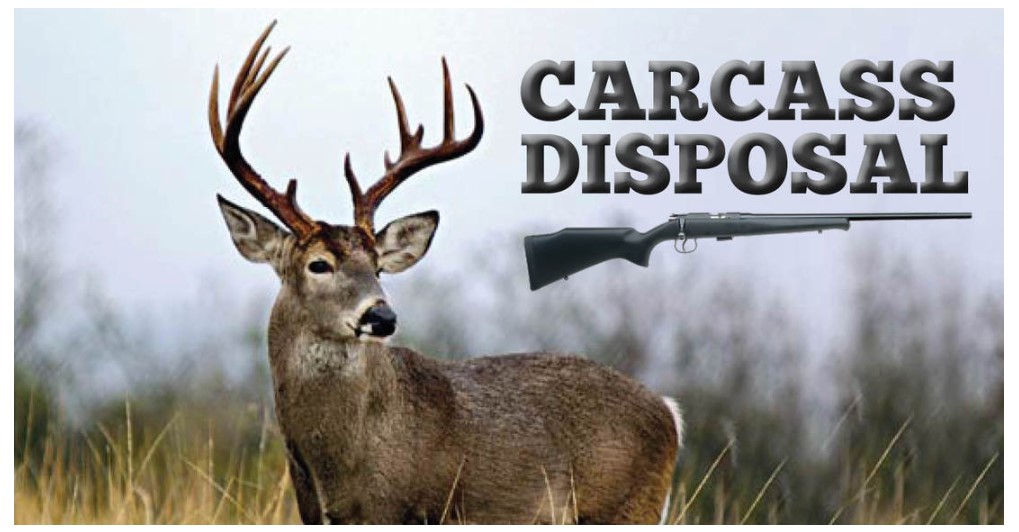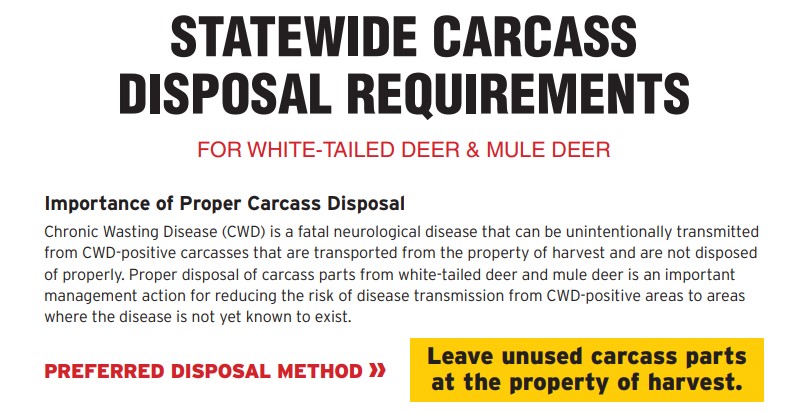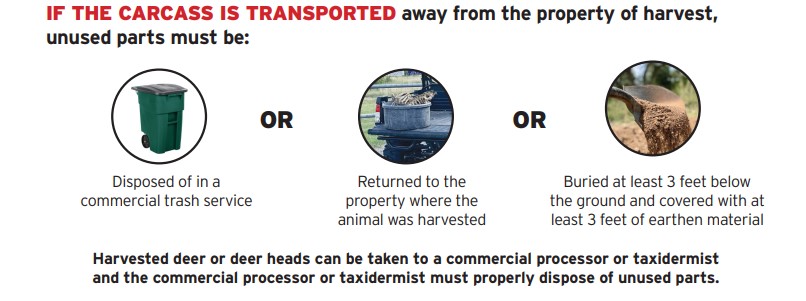New Carcass Disposal Regulations
New regulations are in effect this hunting season related to white-tailed and mule deer carcass disposal in Texas. These deer carcass disposal regulations allow Texas hunters to debone a deer carcass at the site of harvest. However, proof of sex and license tags must be maintained until the hunter reaches the final destination. By leaving the unused parts at the site of harvest, TPWD suggests the chance of spreading Chronic Wasting Disease to other areas of the state is significantly reduced. For most Texas hunters, these new regulations do not change how they currently care for their deer following harvest.

The regulation requires that meat from each deboned deer carcass must remain in whole muscle groups and maintained in a separate bag, package or container until reaching the final destination. Successful hunters cannot chop, slice, or grind meat prior to transport, but this change allows hunters to leave long bones of whitetail and mule deer at the property of harvest. Hunters can still quarter animals for transport or bring them to a deer processor. Proper carcass disposal
“Proper disposal of all potentially infectious material is critical for reducing the risk of disease transmission,” said Blaise Korzekwa, Texas Parks & Wildlife Department (TPWD) White-tailed Deer Program Leader. “These new deer carcass disposal regulations provide hunters more options when it comes to processing their deer to reduce that risk. If CWD is not managed and efforts are not made to mitigate potential spread of the disease, the implications for Texas and its multibillion-dollar ranching, hunting, wildlife management and real estate economies could be significant.”
Carcass Disposal Regs & Options
- Left or returned to the property where the animal was harvested
- Directly or indirectly disposing of the remains at a permitted landfill
- Burying the carcass at a depth of no less than 3 feet below the natural surface of the ground and covered with at least 3 feet of earthen material

These disposal measures apply to unused carcass parts from native deer harvested in Texas. This only includes white-tailed deer and mule deer that are being transported from the property of harvest. If carcass parts from native deer species are not being transported from the property of harvest, these carcass disposal rules would not apply. Livestock carcass disposal is already regulated by the Texas Commission on Environmental Quality.
For those hunters that take their harvest to a commercial deer processor, it will be up to the processor to properly disposes unused parts for them. For hunters processing deer at home, disposal in a commercial trash service is preferred.

Deer Carcass Disposal Regulations Seem Reasonable
This new regulation makes sense from a disease and deer management standpoint. I appreciate the fact that myself and other deer hunters can now debone deer at the site of kill. For me, the most difficult aspect of processing a deer has always disposing of the bones. This new regulation provides Texas’ deer hunters with more flexibility, since we still have the option of simply quartering up a deer or brining it to a processor.
According to Alan Cain, TPWD Big Game Program Director, “Part of the issue with chronic wasting disease is there is no cure. It’s not like a virus or bacteria. It’s just this little misfolded prion protein that causes other prion proteins to misfold in the brain and essentially creates holes in the brain, which leads to all kinds of neurological issues and problems with the health of the deer. Ultimately, it’s fatal. If we can minimize the impacts or try to stop the spread of disease in part through deer carcass disposal regulations, then that’s a win.”